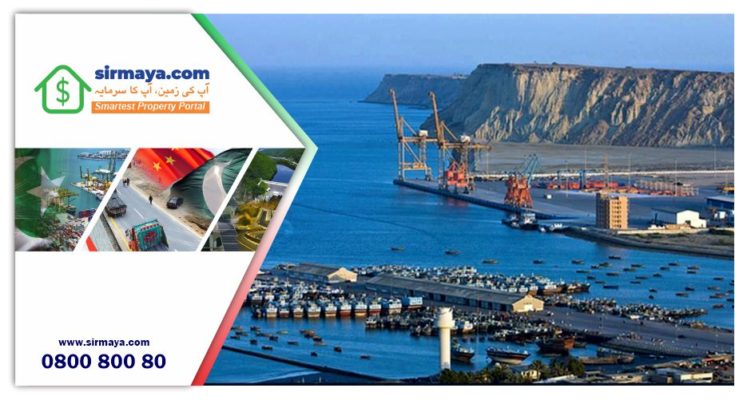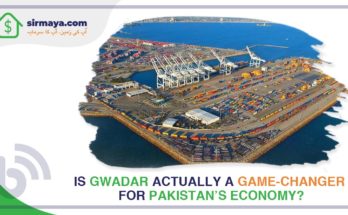Globalization of Economy
Globalization is a phenomenon that we all call a new age of revolution in political, economic and socio-cultural aspects. Economically, globalization has resulted in institutions like IMF, World Band, Asian Development Bank, mainly. Amid the institutionalization of economy, China stood up as a single entity driving its smart growth tactics and implementing them as part of its colonial penetration disguised as “soft power growth” further referring to non-coercive power projection, mainly in South Asian Region.
Moreover, this phenomenon has greatly influenced maritime trade patterns and amplified trade from 2.37 billion to 5.88 billion freight travelling through sea routes. Being in a leading position, China has been observed as a key strategist in converting individual economies into one economy through its “One Belt One Road Initiative”/ “Belt Road Initiative”.
Strategic Bi-lateral Relations
The strategic relations have been on record since 1950’s when China was searching ‘developing nations’ to ally with. Sino-Indian war (1962) further solidified China-Pak relations while posing India with a two-front theatre of threat. Pakistan as an ally was a strategic choice adopted by China since beginning to fulfil her motives. China helped Pakistan in building up conventional and nuclear capabilities over years and built up strong security ties with Pakistan following by the purpose of shifting India’s focus of attention from China to Pakistan, partially if not completely, which it did but increasing India’s security dilemma was not solely China’s politics to be blamed on as other factors like Pakistan’s concept of Muslim nation and nuclear bomb to be a first Muslim nuclear state hence, China is one of the factor and not the only one.
Regarding the military cooperation of the two states, China is said to provide technology to Pakistan without consent of the NSG whereas, China’s stance on this says that the transfer of technology was for the peaceful purposes. Moreover, the cooperation in economic sector is evident by the major investment of china worth $46 Billion in the energy sector as a part of bigger “CPEC”. There is a debate over the ‘real scope’ of China’s CPEC initiative in South Asia and a very highlighting stance pops out that it is in response to US’ “Asia Pivot” policy.
OBOR/BRI corridors:
Let’s clear this top bottom approach that starts from OBOR (One Belt One Road Initiative), encompass CPEC (One of OBOR’s six corridors) and influences Pakistan (one of CPEC’s key geo-strategic country). As an umbrella concept, OBOR is based on six corridors, of which CPEC is a part.
- CPEC (China Pakistan Economic Corridor). It connects China’s Xinjiang region with Pakistan, geo-strategically by sea, rail, road and optical fiber.
- New Eurasian Land
Bridge Economic Corridor.
It connects China, Mongolia. Kazakhstan, Russia, Belarus, Poland, Germany & Netherlands. - China-Mongolia-Russia
Corridor.
As the name suggests this corridor caters the three connecting countries through high speed rail and road links. - China-Central
Asia-Western Asian Corridor.
This corridor caters energy. World’s longest gas pipeline i.e., China-Central Asia pipeline already exists which seeks more cooperation in overall energy sector having in loop Turkmenistan, Uzbekistan, Kazakhstan & Xinjiang to connect Middle East with the pipeline too. - China-Indochina Peninsula Economic Corridor
- Bangladesh-China-India-Myanmar Corridor
CPEC – Pakistan on road to become Asian Tiger?
Pakistan’s vision 2025 foresees Islamic republic of Pakistan to be the next “Asian Tiger” of the region. To achieve such heights, it values its basic seven pillars:
- Sustained Indigenous Inclusive Growth
- Energy – Food – Water Security
- Democratic Governance & Modernization of Public Sector
- Human & Social Capital
- Growth of Private Sector
- Development of Competitive Knowledge
- Infrastructural development & Regional Connectivity
Now what these pillars depict in CPEC projection? It can be summed up in four words i.e., Energy, Infrastructure, Gwadar & Industrial Cooperation which means Pakistan’s reason to join CPEC is mutually beneficial for both China & Pakistan. For China, Pakistan serves as a major geo-strategic state to pursue the plan accordingly and for Pakistan, being opportunist evaluates this opportunity to carry forward its vision of economic growth.
To overcome energy shortages, CPEC’s 56 % portfolio is focused on energy projects that cost around 33 Billion US Dollars. Energy domain is diverse referring to the profit sharing, energy mix, financing and operations.
Industry being a key factor for sustainable development for economy of any state, this is the major portion that has been included in the long-term planning.
- Rashakai Economic Zone
- Special Economic Zone
- Bostan Industrial Zone
- Punjab – China Economic Zone
- ICT Model Industrial Zone, Islamabad
- Development of Industrial Park on Pakistan Steel Mills Land at Port Qasim near Karachi Port Qasim
- Mir Pur Industrial Zone
- Mohmand Marble City
- Moqpondass SEZ Gilgit-Baltistan
China has three strengths; 1) Deep pockets 2) Advance technology 3) Experienced management and Pakistan has one unique strength which is the cheapest labour in the region. This point of calibration between Chinese industries and Pakistani manpower can help these SEZ’s for their sustainable habitation without wastage of time and capital.
How CPEC would benefit Pakistan?
Firstly, it is part of Pakistan’s economic motives to capture economic opportunities to climb up the heights of vision 2025 and its developmental strategy. Gwadar is a gateway to Central Asia & South West extending from Persian Gulf to Indian Ocean and to Far East. Infrastructural development & energy revival not only prospers and boost economic benefits but allows regional connectivity through railroads, highways and pipelines.
Moreover, the least possible amount of revenues is estimated to be over 100 Billion US Dollars on account of transit revenue per annum leading to hundreds & thousands of employment opportunities. Most of the trade requires sea route to travel therefore, development of Gwadar port is beneficial in terms of connectivity & beneficial trade transit route. China has played its smart power projection role according to its soft growth strategies internationally.





